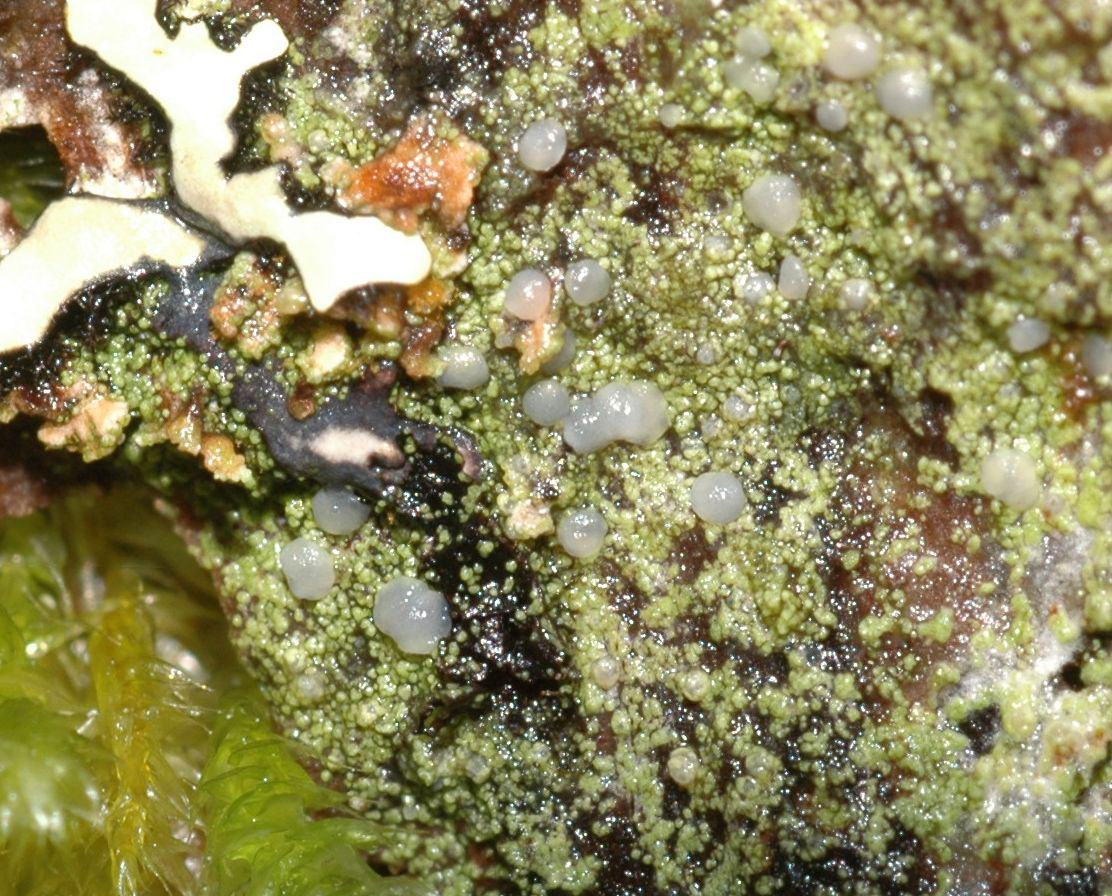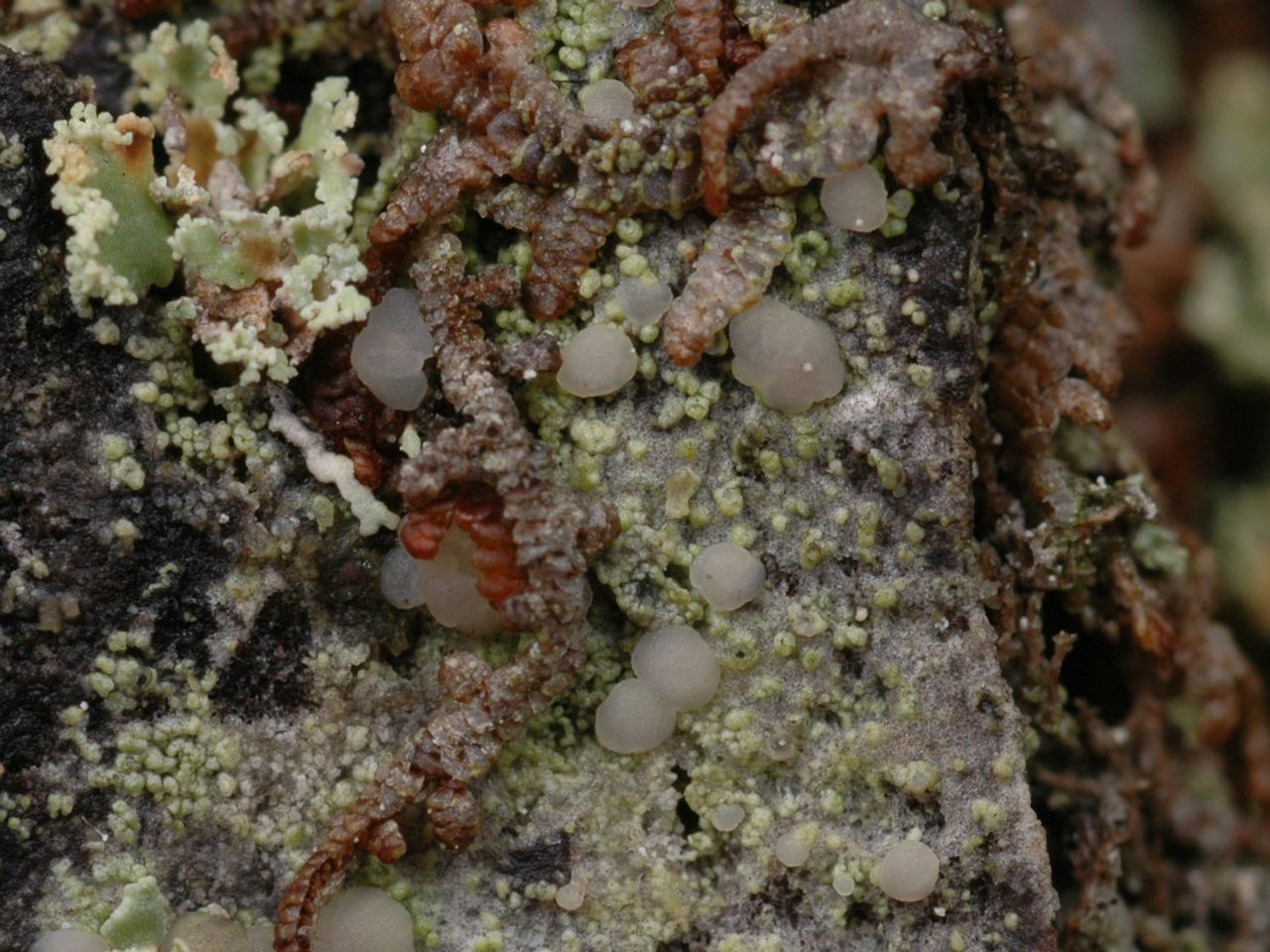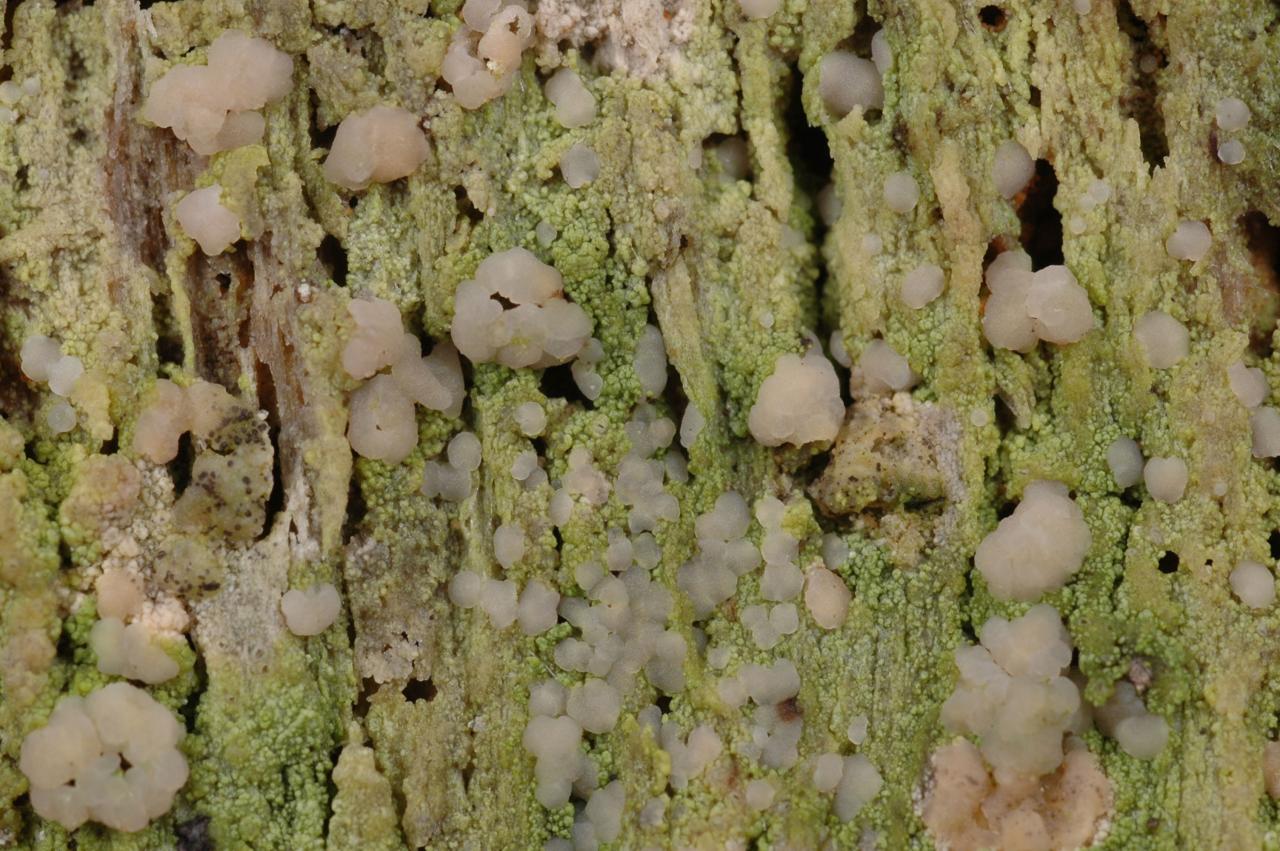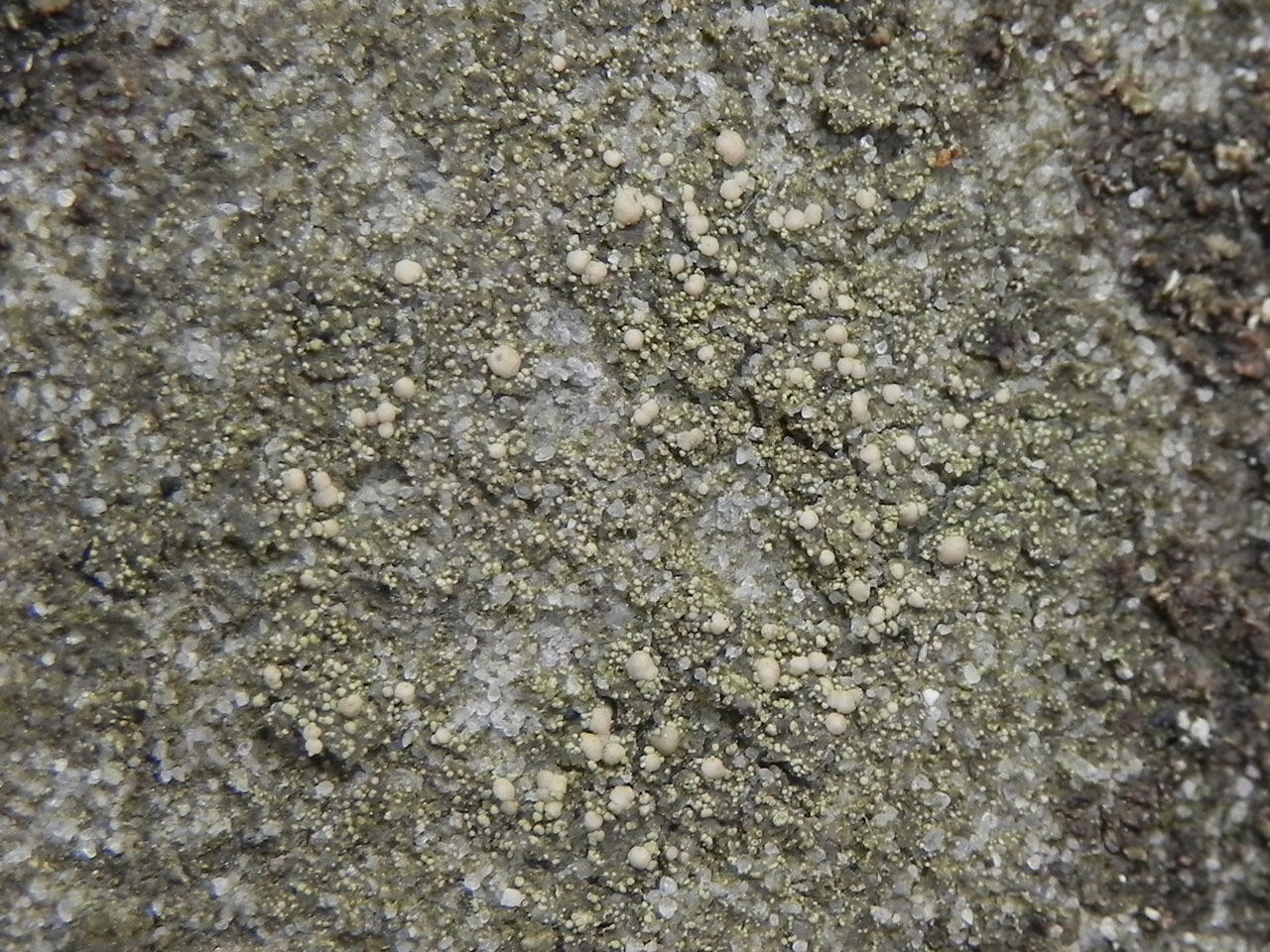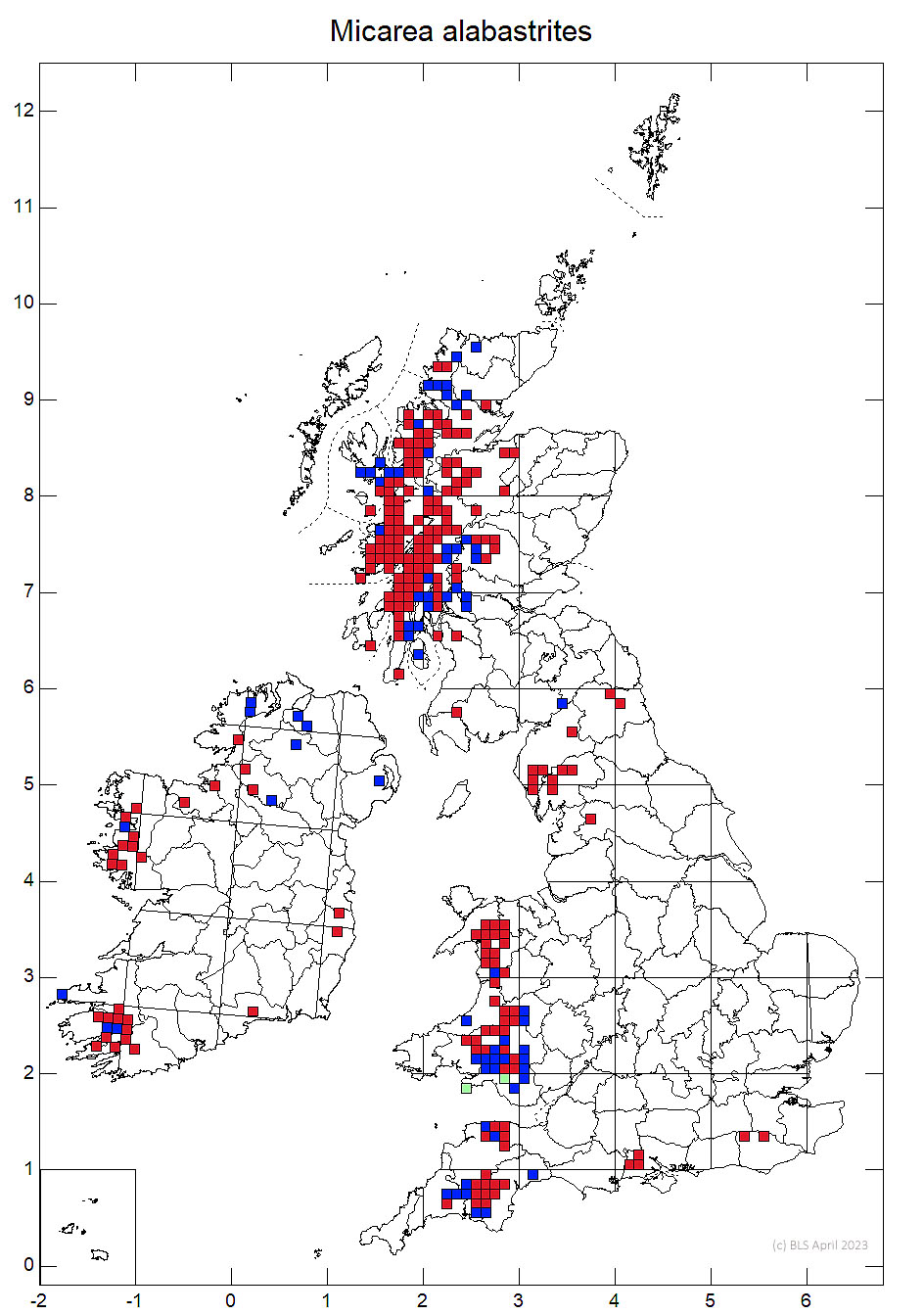A distinctive lichen of acidic bark in temperate rainforests, with cream- or ivory-white apothecia on a thallus of pale green convex to subglobose areoles, with all parts C+ red.
Like Micarea peliocarpa, but apothecia and pycnidia not pigmented; thallus of pale green convex to subglobose areoles; apothecia 0.2–0.7 mm diam., to 1 mm when tuberculate, cream- or ivory-white; ascospores (16–) 18–26 (–29) × (4–) 4.5–5 (–6) µm, 3(-7)-septate. Thallus and apothecial sections C+ red (gyrophoric acid).
Extreme shade morphs of Micarea peliocarpa (with whitish apothecia) are usually sparingly fertile, whereas the apothecia of M. alabastrites are almost invariably numerous and crowded. Distinguished from extreme shade morphs of M. cinerea by the mostly 3-septate ascospores and shorter, curved or sigmoid macroconidia. Micarea pycnidiophora, M. stipitata and Scoliciosporum pruinosum also have whitish apothecia and grow on acid bark, but all have narrower, acicular ascospores, whereas M. adnata has shorter, 1-septate ascospores.
Usually on acid bark (often over bryophytes), occasionally on wood and rarely on rocks; in oceanic woodlands, especially temperate rainforests but extending occasionally into drier oceanic areas.

Frequent. W. Britain, Ireland.
Britain has the largest known popualtion of this lichen in the world.
Britain: Notable & International Responsiblity species
Cannon, P., Orange, A., Aptroot, A., Sanderson, N., Coppins, B. & Simkin, J. (2022). Lecanorales: Pilocarpaceae, including the genera Aquacidia, Byssoloma, Fellhanera, Fellhaneropsis, Leimonis and Micarea. Revisions of British and Irish Lichens 27: 1-48.
Text by Neil A Sanderson based on Canon et al (2022).
